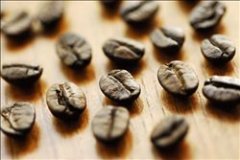A brief introduction to the history and culture of the origin, development and development of Yega Shifeiwaka boutique coffee beans

Yejia Shefei exudes an extremely complex aroma, showing an extremely outstanding taste, which is difficult to describe. In general, Yerga Shefi's dry aroma exudes intense fruit aromas, with thick dry fruit aromas, strawberry, mango, apricot paste aromas. The moist aroma is like sweet syrup, like sticky apricot juice, wrapped in pristine honey or chocolate. The taste is not strong, the mellow is medium, the sour taste is not obvious, but lively and bright, like fruit black tea in general. Ethiopia's Yirgacheffe coffee is petite, but gentle and sweet. As the home of coffee, Ethiopia's millennia of growing and processing traditions have resulted in high-quality washed Arabica beans. Light baked with unique lemon, floral and honey sweet aromas, soft fruit acids and citrus notes, fresh and bright taste. No milk, no sugar, let the rich texture and unique soft floral brush your taste buds, leaving endless aftertaste…
Yegashefi is a small town, 700- 21,000 meters above sea level, synonymous with Ethiopian fine coffee. It is a wetland since ancient times, and the old saying "Yirga" means "settle down" and "Cheffe" means "wetland". The way coffee is produced and the flavor is so prominent that Ethiopian coffee farmers compete to be proud of their coffee with Yegashfi flavor, which has become Africa's most famous coffee producing area.
Yega Shefi, nearly two kilometers above sea level, is one of the highest coffee-producing areas in the world. Yirga means "settle down", Cheffe means "wetland", and Lake Turkana, Lake Abaya and Lake Chamo bring abundant water vapor here. In the rift valley represented by Misty Valley, fog permeates all year round, spring is like all the year round, the breeze is gentle, cool and humid, thousands of coffee trees thrive and multiply, giving birth to the unique fragrance of flowers and fruits of Yejia Xuefei, which is ambiguous and unpredictable.
European monasteries pioneered local coffee farming, which was later run by coffee communities or cooperatives in the villages surrounding the town. There are no special plantations here, coffee trees naturally scattered in the forest and pastoral. During harvest season, Ethiopian Coffee Trading Company will go to town to buy coffee beans collected by farmers, and finally auction them for export under the brand name "Yegashefi".
Ethiopia's Yirgacheffe coffee is petite, but gentle and sweet. As the home of coffee, Ethiopia's millennia of growing and processing traditions have resulted in high-quality washed Arabica beans. Light baked with unique lemon, floral and honey sweet aromas, soft fruit acids and citrus notes, fresh and bright taste. No milk, no sugar, let the rich texture and unique soft floral brush your taste buds, leaving endless aftertaste…
Yegashefi is a small town, 700-2100 meters above sea level, synonymous with Ethiopian fine coffee. It is a wetland since ancient times, and the old saying "Yirga" means "settle down" and "Cheffe" means "wetland". The way coffee is produced and the flavor is so prominent that Ethiopian coffee farmers compete to be proud of their coffee with Yegashfi flavor, which has become Africa's most famous coffee producing area.
At first, the coffee trees in Yegashefi were planted by European monks, but later by farmers or cooperatives. Yegashefi is actually formed by surrounding coffee communities or cooperatives, which generally include: Hafusa, Hama, and Biloa.
These mountain villages are foggy, spring all year round, cool but not hot in summer, rain but not damp in winter, and they breed unique regional flavors of citrus and flowers. Most coffee trees were planted in farmers 'backyards or mixed with other crops in the field. The coffee trees of Yekaterinburg were planted by European monks (a bit like Belgian monks growing wheat to brew beer), and later by farmers or cooperatives. Yerga Shefi is actually constructed by surrounding coffee communities or cooperatives, including Idido, Harfusa, Hama, and Biloa near Misty Valley, all washed, but a small number of unique beans are deliberately sunburned to enhance the charming fruity flavor and body. These mountain villages are foggy, spring all year round, cool but not hot in summer, rain but not damp in winter, and they have a unique regional flavor of citrus and flowers. Coffee trees are mostly planted in farmers 'backyards or mixed with other crops in the field. The yield per household is not much. It is a typical pastoral coffee. The Yejia Shefei award-winning beans are almost from the above coffee villages and communities
Ethiopia's Yirgacheffe coffee is petite, but gentle and sweet. As the home of coffee, Ethiopia's millennia of growing and processing traditions have resulted in high-quality washed Arabica beans. Light baked with unique lemon, floral and honey sweet aromas, soft fruit acids and citrus notes, fresh and bright taste. No milk, no sugar, let the rich texture and unique soft floral brush your taste buds, leaving endless aftertaste…
Yegashefi is a small town, 700-2100 meters above sea level, synonymous with Ethiopian fine coffee. It is a wetland since ancient times, and the old saying "Yirga" means "settle down" and "Cheffe" means "wetland". The way coffee is produced and the flavor is so prominent that Ethiopian coffee farmers compete to be proud of their coffee with Yegashfi flavor, which has become Africa's most famous coffee producing area.
At first, the coffee trees in Yegashefi were planted by European monks, but later by farmers or cooperatives. Yegashefi is actually formed by surrounding coffee communities or cooperatives, which generally include: Hafusa, Hama, and Biloa.
These mountain villages are foggy, spring all year round, cool but not hot in summer, rain but not damp in winter, and they breed unique regional flavors of citrus and flowers. Coffee trees are grown mostly in farmers 'backyards or mixed with other crops on the farm. Yega Shefi, nearly two kilometers above sea level, is one of the highest coffee-producing areas in the world. Yirga means "settle down", Cheffe means "wetland", and Lake Turkana, Lake Abaya and Lake Chamo bring abundant water vapor here. In the rift valley represented by Misty Valley, fog permeates all year round, spring is like all the year round, the breeze is gentle, cool and humid, thousands of coffee trees thrive and multiply, giving birth to the unique fragrance of flowers and fruits of Yejia Xuefei, which is ambiguous and unpredictable.
European monasteries pioneered local coffee farming, which was later run by coffee communities or cooperatives in the villages surrounding the town. There are no special plantations here, coffee trees are naturally scattered in forests and fields. During harvest season, Ethiopian coffee trading companies would come to town to buy coffee beans collected by farmers and eventually auction them for export under the brand name "Yegashefi."
Important Notice :
前街咖啡 FrontStreet Coffee has moved to new addredd:
FrontStreet Coffee Address: 315,Donghua East Road,GuangZhou
Tel:020 38364473
- Prev

A brief introduction to the description of the flavor and aroma characteristics of the fine coffee bean Yega Chefevoca
Traditionally, Yega snow coffee is treated by the oldest sun treatment, but in 1972, Ethiopia introduced water washing technology from Central and South America in order to improve its quality, which made its jasmine and citrus fragrance clearer and more refined. It has become the best product of the world's boutique beans, thanks to its exquisite washing technology. After the 1970s, this area was mainly washed and became the most popular in Egypt.
- Next

A brief introduction to the Market Price of Sunshine Yerjia Shifeiwaka Fine Coffee Bean varieties with distinctive characteristics
Compared with the traditional sun-treated Harald area, sun exposure is not common. As the first water washing plant in Ethiopia, coffee drinkers are more familiar with Yejia, which is famous for its elegant lemon and citrus style. The coffee flavor treated with water washing is not easy to have wild flavor, has the characteristics of purity and freshness, and is suitable for light roasting degree.
Related
- Detailed explanation of Jadeite planting Land in Panamanian Jadeite Manor introduction to the grading system of Jadeite competitive bidding, Red bid, Green bid and Rose Summer
- Story of Coffee planting in Brenka region of Costa Rica Stonehenge Manor anaerobic heavy honey treatment of flavor mouth
- What's on the barrel of Blue Mountain Coffee beans?
- Can American coffee also pull flowers? How to use hot American style to pull out a good-looking pattern?
- Can you make a cold extract with coffee beans? What is the right proportion for cold-extracted coffee formula?
- Indonesian PWN Gold Mandrine Coffee Origin Features Flavor How to Chong? Mandolin coffee is American.
- A brief introduction to the flavor characteristics of Brazilian yellow bourbon coffee beans
- What is the effect of different water quality on the flavor of cold-extracted coffee? What kind of water is best for brewing coffee?
- Why do you think of Rose Summer whenever you mention Panamanian coffee?
- Introduction to the characteristics of authentic blue mountain coffee bean producing areas? What is the CIB Coffee Authority in Jamaica?

